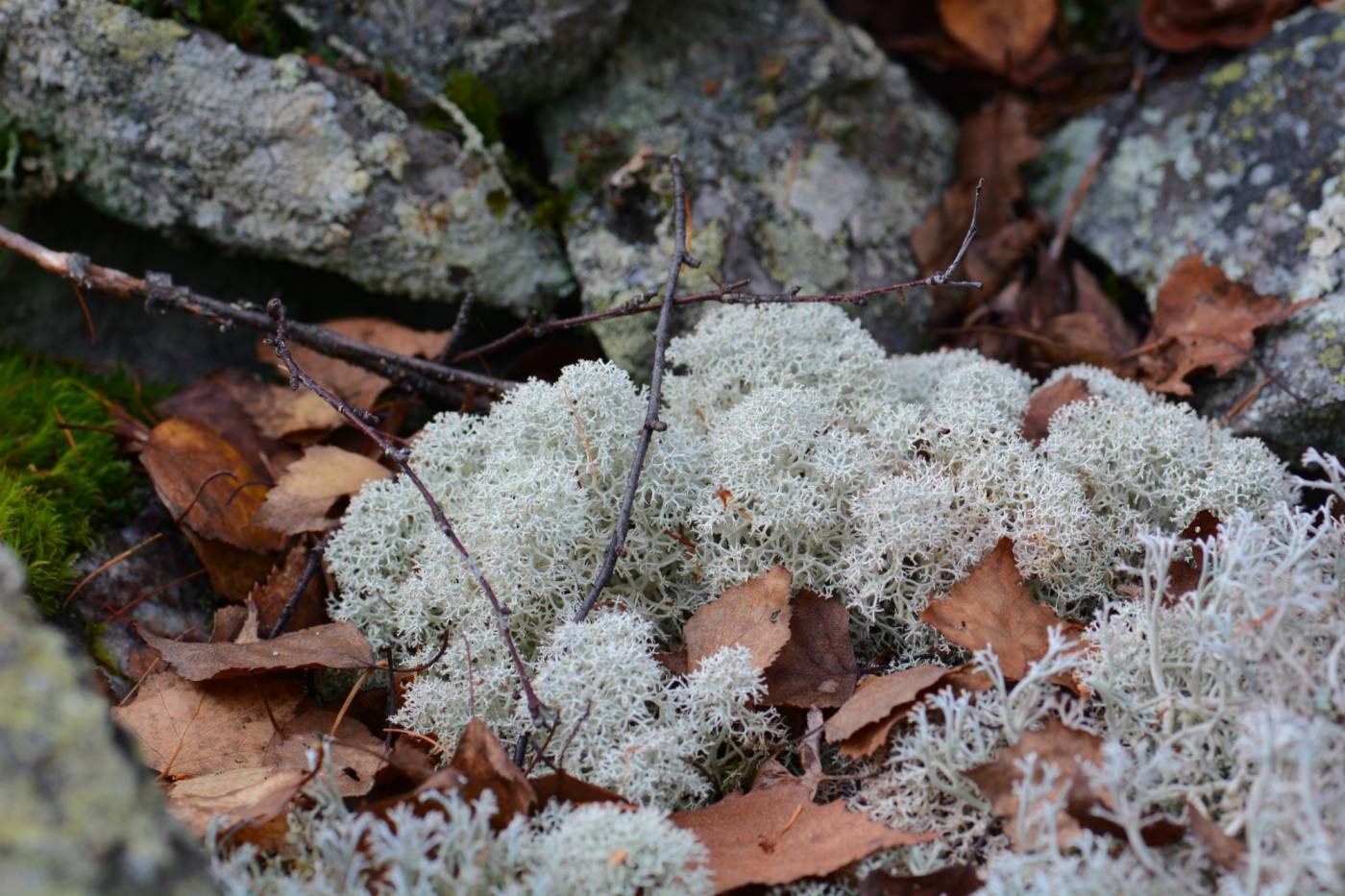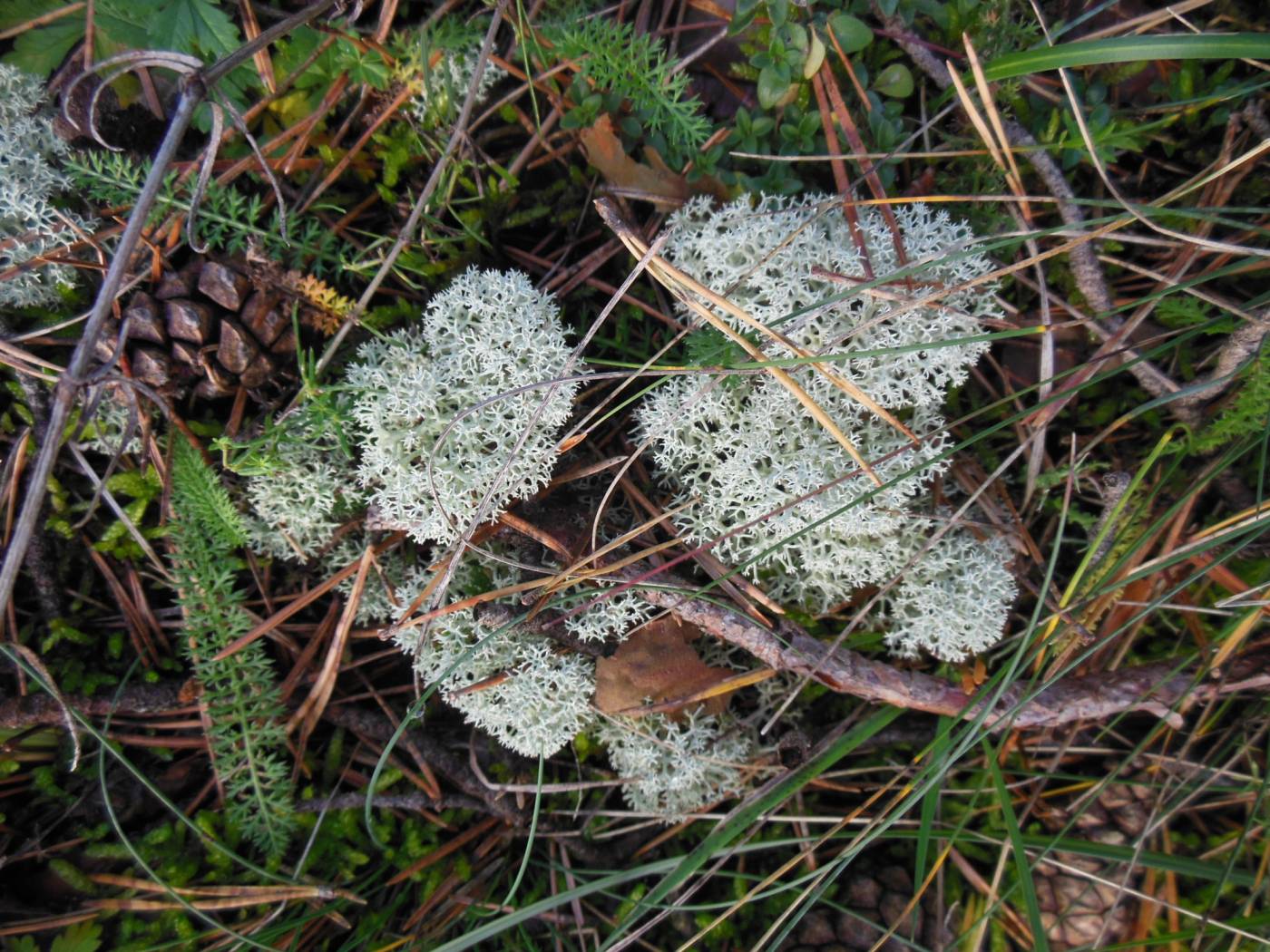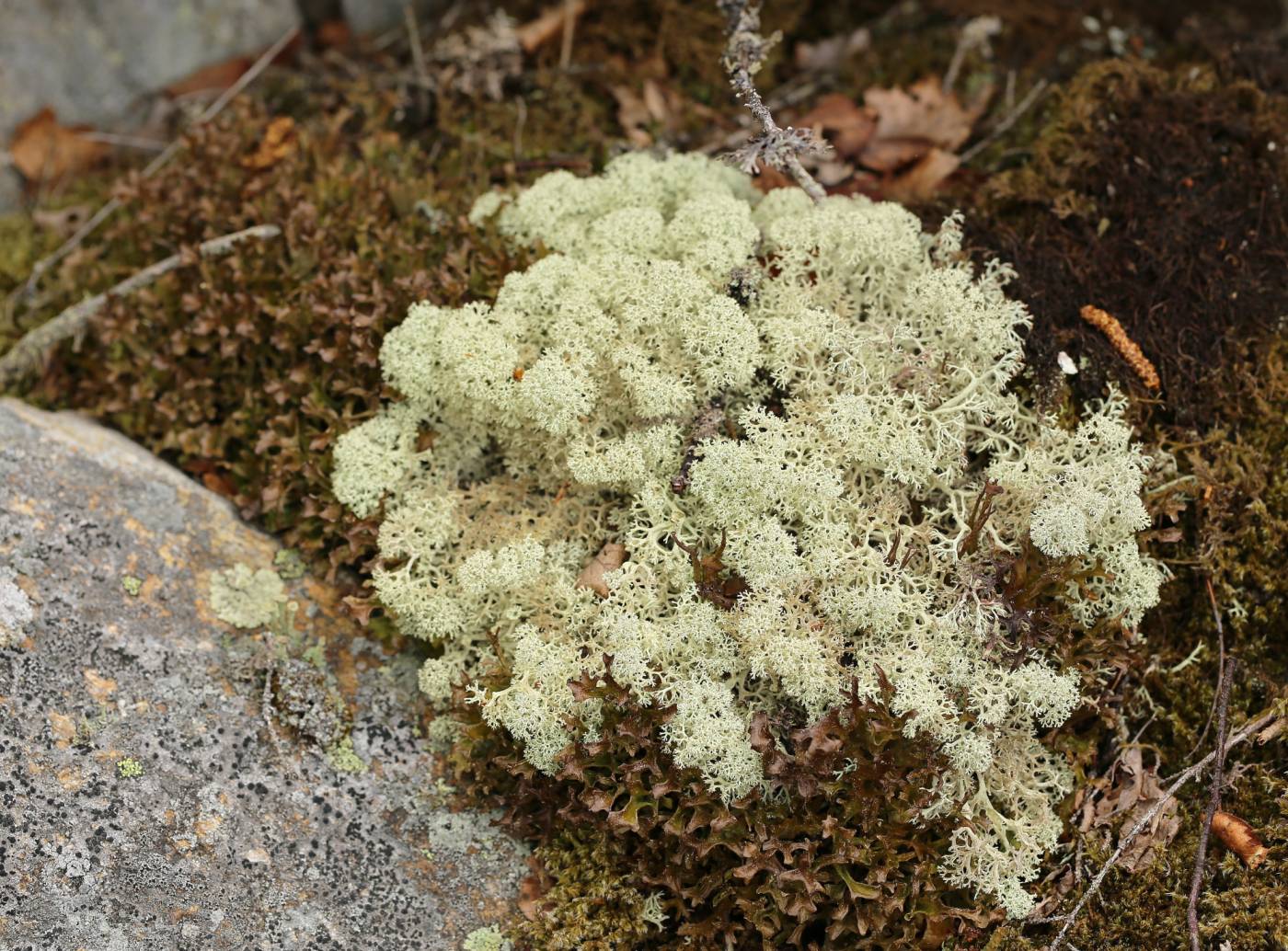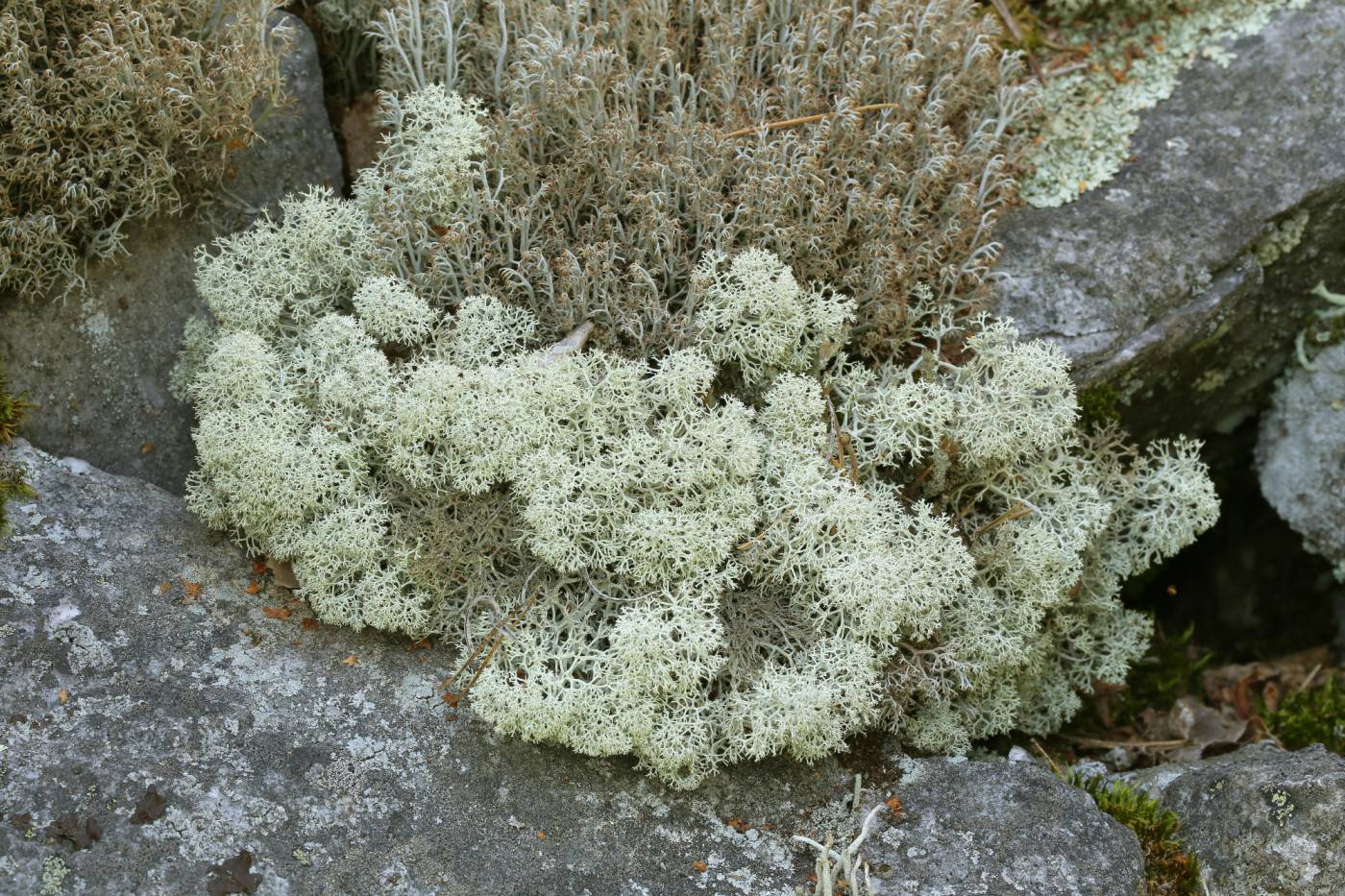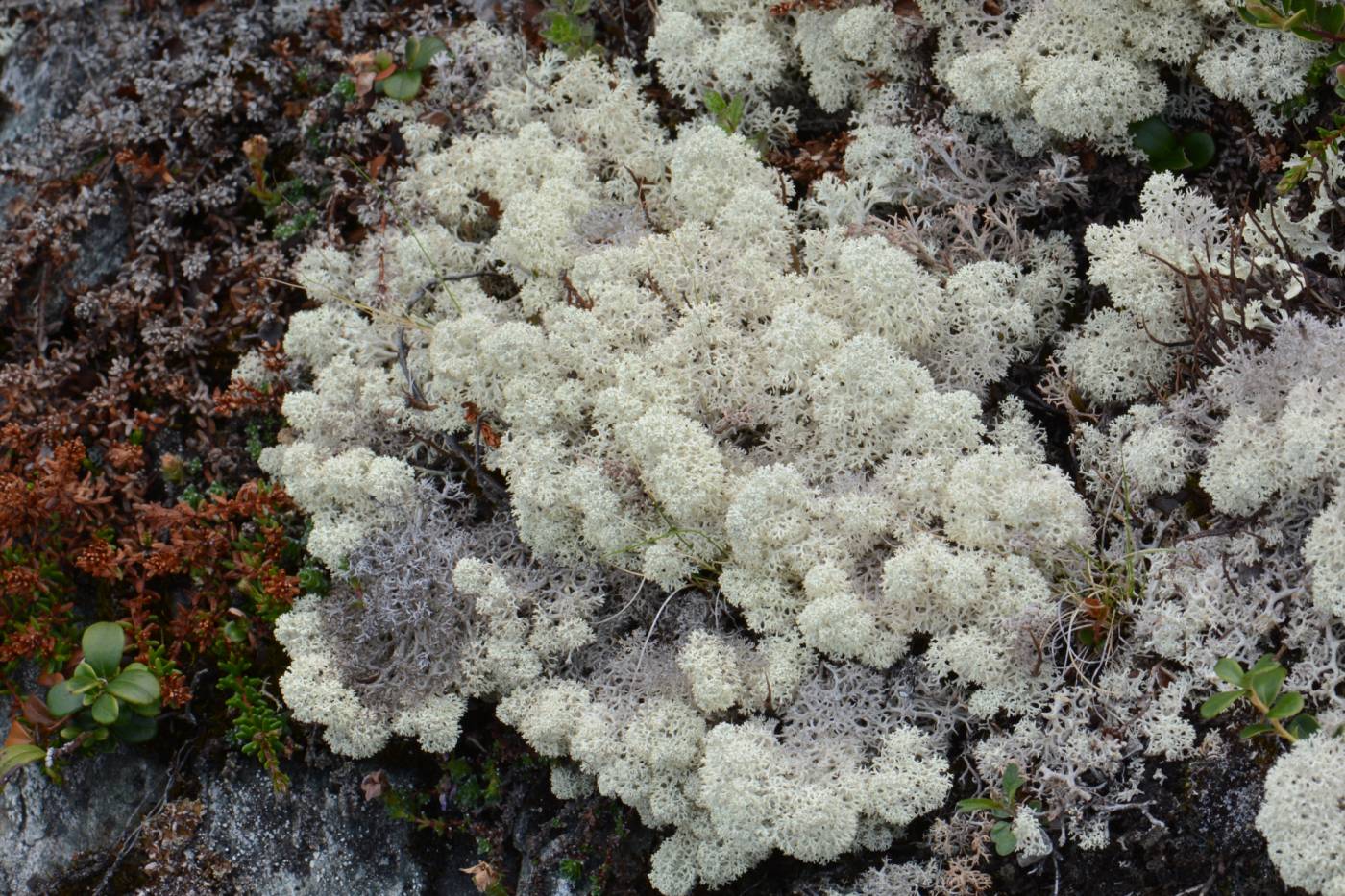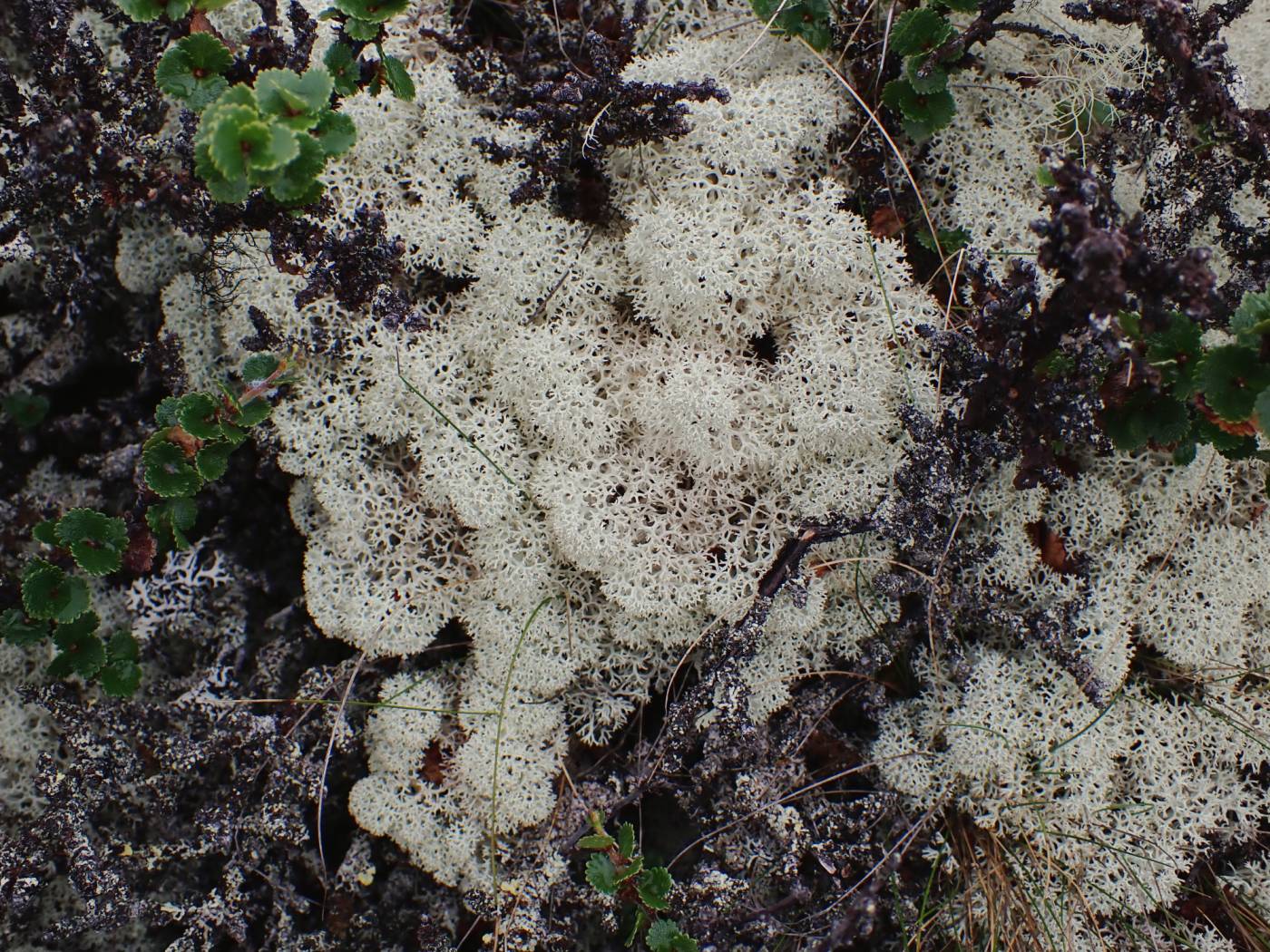Cladonia stellaris is a rare species of the group of reindeer cup lichens. It has a very distinctive morphology, forming typical cauliflower-shaped “heads”. It contains perlatolic acid (UV+ white) and has a yellowish tinge due to usnic acid. Chemically and partly also morphologically, it is similar to C. portentosa. However, the latter is less dense and compact (does not form the cauliflower-shaped heads) at the first sight.
It is mainly a boreal species of acidic soil at places with long persisting snow cover. In the Czech Republic, it is rare in relic pine forests, on screes and peatbogs. Elsewhere, it also grows in tundra grasslands and on heathlands. In contrast to other reindeer cup lichens, C. stellaris occurs in later successional stages and is very sensitive to disturbances (Alonso-García et al. 2021). In arctic and subarctic areas, it is the basic nutrition for reindeers, the most abundant herbivores there. It is one of the few known lichen glacial relics in the Czech Republic. The species has been dramatically disappearing; it is now absent from about 80–90% of its historical localities (Malíček et al. 2011). The main reasons are elimination of suitable stands, climate change and also collecting in several cases. It is currently known from about twenty localities, mostly from the Šumava Mts, the Brdy highlands and the Kokořín region. Additionally, it is rare at most localities. The richest populations are known in Povydří in the Šumava Mts. There is an interesting occurrence at Želivka (Černohorský 1961) where it grows at an altitude of 400 meters in a relic pine forest on serpentinite.
In Scandinavia, C. stellaris is collected for decorative purposes; it is used in wreaths, flower pots and decorations of graves (Ahti & Stenroos 2013). Sometimes it is also used as tree models in landscape models, e.g., in museums. In central Europe, it is used as a decoration of public restrooms where it is usually coloured and placed in show-cases (Malíček, pers. obser.). In the Czech Republic, it used to be collected for decorations at certain localities as well (Malíček et al. 2011).
Literature: Alonso-García M., Grewe F., Payette S. & Villarreal J. C. (2021): Population genomics of a reindeer lichen species from North American lichen woodlands. – American Journal of Botany 108: 159–171. Malíček J., Bouda F., Kocourková J., Palice Z. & Peksa O. (2011): Zajímavé nálezy vzácných a přehlížených dutohlávek v České republice. – Bryonora 48: 34–50. Ahti T. & Stenroos S. (2013): Cladoniaceae. – In: Ahti T., Stenroos S. & Moberg R. [eds], Nordic Lichen Flora 5: 87–89. Černohorský Z. (1961): Dutohlávka alpská (Cladonia alpestris (L.) Rabh.) na dolnokralovických hadcích. – Ochrana přírody 16: 46–48.
taxonomic classification:Ascomycota → Lecanoromycetes → Lecanorales → Cladoniaceae → Cladonia
most frequented synonyms:Cladonia alpestrisRed List (Liška & Palice 2010):CR – critically endangered
Red List (Malíček 2023):C3 – endangered
Occurrence in the Czech Republic
All records: 78, confirmed 58. One click on a selected square displays particular record(s), including their source(s).
